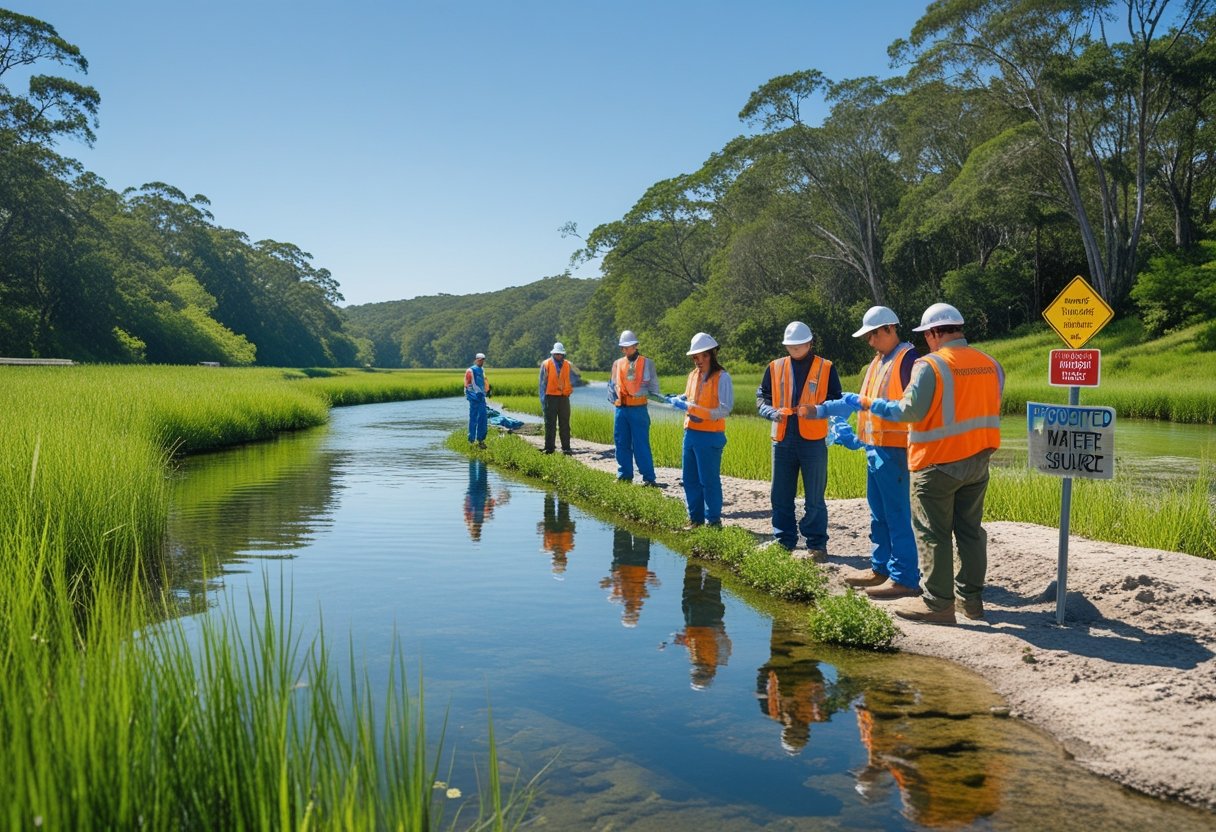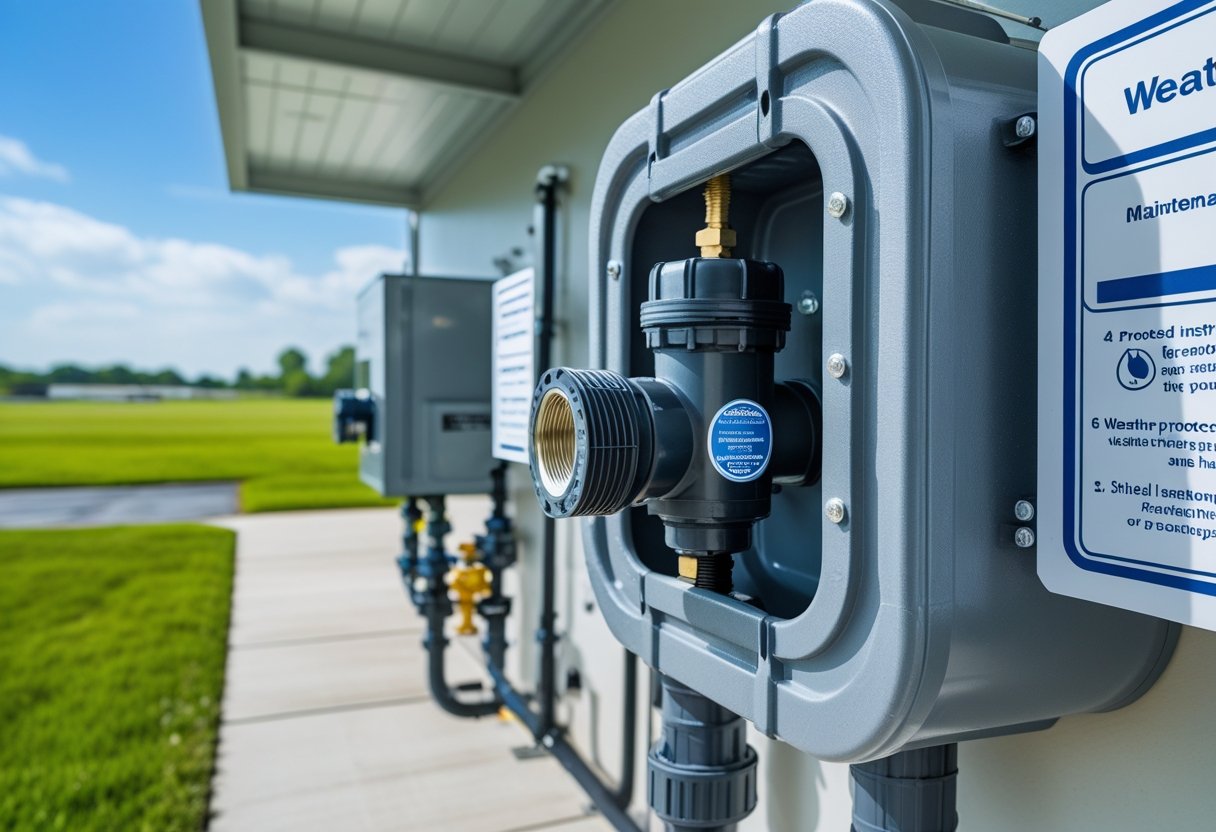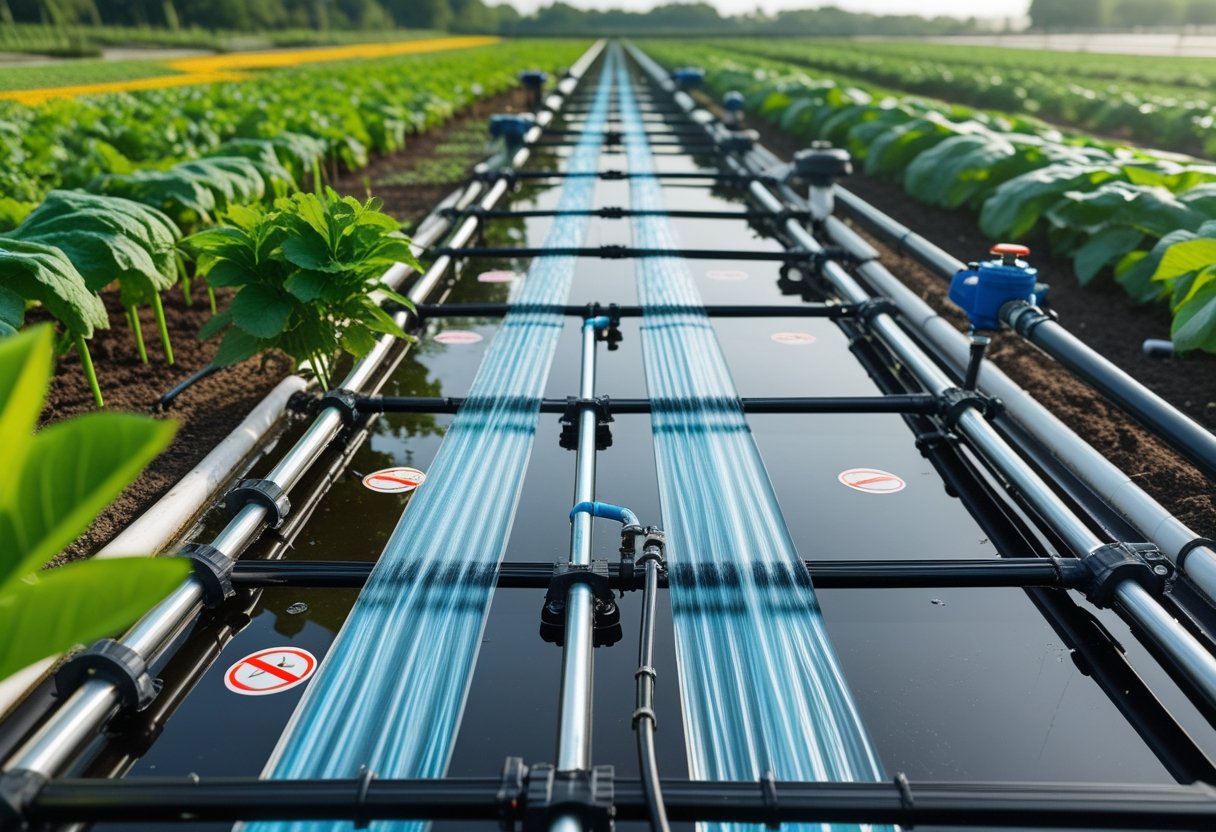Have you ever wondered how often should a backflow preventer be tested? Keeping your home safe means paying attention to important systems like backflow preventers. These devices stop contaminated water from flowing back into your clean water supply. If you're a California homeowner, you might wonder how often you need to test these critical safety devices.
In California, backflow prevention devices must be tested at least annually, as required by California State Law: Title 17, Article 2, section 7605, subsection C. This yearly testing ensures that the internal components like seals, springs, and moving parts are functioning properly and haven't worn out or become damaged.
We understand that remembering to schedule this test can be challenging. Most water suppliers will send you a reminder postcard when your annual test is due. This testing must be performed by a certified backflow tester, and while it may seem like just another home maintenance task, it's actually a crucial step in protecting your family's drinking water from potential contamination.
In this article, you’ll learn how often a backflow preventer should be tested to meet California regulations and keep your drinking water safe.
Below, we’ll walk through each important aspect:
- What is a backflow preventer and why testing matters
- Backflow testing frequency in California (residential and commercial)
- How to know if your backflow preventer needs repair or replacement
- Certified backflow testing with Pacific Backflow
Let's dive in!
What is a backflow preventer and why testing matters
Backflow preventers are critical safety devices that stop contaminated water from flowing back into your clean water supply. Regular testing ensures these devices work properly and keeps your drinking water safe from harmful contaminants.
How backflow prevention protects your water supply
A backflow preventer is a mechanical device installed on water pipes that allows water to flow in only one direction. It creates a physical barrier between your drinking water and potentially contaminated sources.
When water pressure drops in the main supply line, it can create a vacuum effect that pulls water backward. This is called backflow. Without prevention, contaminants from irrigation systems, pools, or industrial equipment might enter your drinking water.
Common types of backflow preventers include:
- Reduced Pressure Zone (RPZ) devices
- Double Check Valve Assemblies
- Pressure Vacuum Breakers
These devices use check valves, relief valves, or air gaps to prevent contamination. They're typically installed where your water supply connects to systems that might contain harmful substances.
What happens when the device fails or isn't maintained
Backflow preventer failure can lead to serious health and safety risks. When these devices malfunction, contaminated water may mix with your clean water supply.
Potential consequences include:
- Exposure to harmful bacteria and chemicals
- Waterborne illnesses affecting household members
- Widespread contamination in neighborhood water systems
Most failures happen gradually due to wear and tear. Springs weaken, rubber components deteriorate, and debris can prevent valves from closing properly. Regular testing catches these issues before they become dangerous.
Without maintenance, you might not know your device has failed until people get sick. By then, the contamination has already spread through your pipes.
Who's responsible for testing: homeowner or utility?
In California, the responsibility for backflow preventer testing typically falls on property owners, not the utility company. As a homeowner, you must ensure your device is tested according to local requirements.
Testing must be performed by certified backflow prevention assembly testers. These professionals have special training and equipment to accurately check if your device works properly.
Most California water districts require:
- Annual testing at minimum
- Documentation of test results
- Prompt repairs when issues are found
The utility company usually maintains records of your compliance and may send reminders when testing is due. Some utilities offer testing services for a fee.
Failure to comply with testing requirements can result in fines or even water service disconnection in extreme cases. We recommend keeping records of all tests and maintenance for your protection.
Backflow testing frequency in California (residential and commercial)
California maintains strict regulations for backflow prevention to protect public water supplies. Testing requirements vary slightly across different jurisdictions, but most follow a consistent pattern based on state guidelines.
Statewide requirements: What the law says
In California, backflow preventer testing is governed by the California Code of Regulations, Title 17. This state regulation mandates that all backflow prevention devices must be tested regularly to ensure proper functioning. The law applies to both residential and commercial properties with installed backflow preventers.
The standard requirement throughout California is annual testing. California homeowners must schedule certified backflow testing at least once per year, or more frequently if required by local ordinance, to ensure the device is working properly, according to DOE guidelines.
This yearly inspection must be performed by a certified backflow tester who has proper credentials recognized by local water authorities.
Different types of preventers (Reduced Pressure Zone, Double Check Valve, and Pressure Vacuum Breaker assemblies) all generally follow the same annual testing schedule. However, some high-risk installations might require more frequent testing.
In line with EPA recommendations, local water districts in California determine inspection schedules based on contamination risk level, often requiring more frequent testing for properties with irrigation systems, chemical usage, or high-flow applications.
Annual testing rules by city or district
Local water agencies in California may establish specific regulations that build upon state requirements. While annual testing is the standard baseline, some cities or water districts implement additional rules:
- City of Santa Rosa: Requires annual testing by certified testers from their approved list
- Many municipalities: Maintain their own list of certified testers that must be used
- Some districts: Require notification before and after testing
Commercial properties, especially those handling hazardous materials, sometimes face stricter requirements. These might include bi-annual testing or additional inspections after system modifications.
For residential homeowners, the process is usually more straightforward, but compliance is equally mandatory.
What happens if you skip the inspection or miss a deadline
Failing to comply with backflow testing requirements in California can lead to serious consequences:
- Written notices are typically sent as first warnings
- Financial penalties may be imposed for continued non-compliance
- Water service interruption is possible for persistent violations
Some water districts may add testing fees directly to your water bill if you miss deadlines. Others might perform the test themselves and charge significantly higher rates than private testers.
Beyond penalties, skipping tests creates safety risks. Undetected backflow preventer failures can lead to contamination of your property's water supply or even the public system.
We recommend setting calendar reminders for annual testing dates to avoid these issues.
How to know if your backflow preventer needs repair or replacement
Backflow preventers protect your water supply from contamination but require timely maintenance to function properly. Knowing when to repair or replace your device can save you from costly water damage and ensure your water remains safe.
Symptoms of a failing or leaking backflow device
Visible leaks are the most obvious sign of backflow preventer problems. Look for water dripping from the relief valve or connections, especially after pressure changes in your system.
Unusual noises like whistling, chattering, or hammering often indicate internal valve problems or loose components that need attention.
Poor water pressure throughout your home might suggest backflow device issues. If water pressure suddenly drops or fluctuates, your backflow preventer may be partially blocked or failing.
Slow drainage in sinks, showers, or other fixtures can point to backflow preventer problems. This symptom often appears alongside other issues and warrants professional inspection.
Failed annual tests are definitive indicators that repair or replacement is needed. Always address failed test results promptly.
Common causes of premature failure
Freeze damage is a significant concern in colder California regions. When water freezes inside the device, it expands and can crack internal components or the housing.
Mineral buildup from hard water is common in many California areas. These deposits can prevent valves from sealing properly and cause internal corrosion.
Improper installation puts unnecessary stress on components. Devices installed without proper clearance, support, or alignment often fail prematurely.
High water pressure exceeding manufacturer specifications can damage seals and internal parts. Most residential backflow preventers are rated for specific pressure ranges.
Lack of maintenance is perhaps the most preventable cause of failure. Annual testing and maintenance help identify small issues before they become major problems.
How long most backflow preventers last in California conditions
The average lifespan of a backflow preventer in California is 7-10 years with proper maintenance. Premium models may last 12-15 years when well-maintained.
Climate considerations vary across California. Coastal areas with salt air may experience faster corrosion, while desert regions see accelerated wear from heat extremes and dust.
Water quality significantly impacts longevity. Areas with hard water or high sediment content typically see shorter device lifespans unless filtration is installed upstream.
Installation location matters too. Devices installed indoors or in protected enclosures typically outlast those exposed to direct elements by 3-5 years.
Maintenance frequency directly correlates with lifespan. We find that devices receiving annual professional inspections last 30-50% longer than those neglected until problems arise.
Certified backflow testing with Pacific Backflow
Pacific Backflow Corporation has been providing specialized backflow testing services in California since 1982. They hold California Contractor License #C36-1122068 and employ certified professionals who understand the technical and regulatory aspects of backflow prevention.
What to expect during a professional test
When Pacific Backflow conducts a test on your device, their certified technicians follow standardized procedures to ensure accuracy. They'll inspect all components including check valves, relief valves, and shut-off valves to verify proper operation.
The testing process typically takes 30-45 minutes per device. Technicians use calibrated test kits that measure pressure differentials across the assembly.
During testing, they'll temporarily shut off your water supply. Don't worry - this is brief and normal.
After inspection, you'll receive documentation showing test results, including pressure readings and valve functionality. This paperwork is essential for regulatory compliance and should be kept for your records.
Scheduling reminders and compliance tracking
We understand keeping track of annual testing requirements can be challenging. Pacific Backflow offers automatic reminder services to help you stay compliant.
Their system tracks your testing history and sends notifications before your certification expires. This prevents last-minute scrambling and potential non-compliance penalties.
Many local water authorities in California require test results to be submitted within specific timeframes. Pacific Backflow handles this paperwork, submitting results directly to your water provider.
They maintain digital records of all your testing history, making it easy to verify compliance if questions arise. This is especially valuable during property transactions or insurance reviews.
Why choose a specialized backflow service (not just any plumber)
Backflow prevention requires specialized knowledge beyond general plumbing expertise. Pacific Backflow technicians focus exclusively on backflow systems, giving them deeper understanding of these critical devices.
General plumbers may lack the certification, specialized equipment, or regulatory knowledge needed for proper backflow testing. This can lead to inaccurate results or paperwork issues.
Backflow specialists like Pacific Backflow stay current with changing California regulations. They understand the specific requirements of different water districts throughout the state.
Their technicians can identify potential issues before they become major problems. This preventative approach saves money and prevents water contamination risks.
When backflow devices fail tests, specialized services can immediately diagnose problems and recommend appropriate repairs or replacements.
Conclusion
Regular backflow testing is not just a legal requirement in California—it's essential for protecting your drinking water. Most California water districts require annual testing, as specified by Title 17 of California State Law.
Testing ensures your device works correctly by checking internal parts like seals and springs that wear out over time. This verification prevents contaminated water from flowing back into your clean water supply.
Properties with irrigation systems, hot tubs, or fire suppression systems need special attention as they pose higher backflow risks.
Mark your calendar for yearly testing and consider more frequent checks if you use large volumes of water or have older equipment. Finding a certified tester is easy through your local water district.
By staying on top of backflow testing, we protect not just our own households but our entire community's water supply. The small effort of annual testing prevents potentially serious contamination issues.
Remember that compliance isn't complicated—it just requires some basic knowledge and timely action. Contact your local water authority if you have questions about your specific testing requirements.
Schedule your annual backflow test today with Pacific Backflow to stay compliant and protect your home’s water supply.











